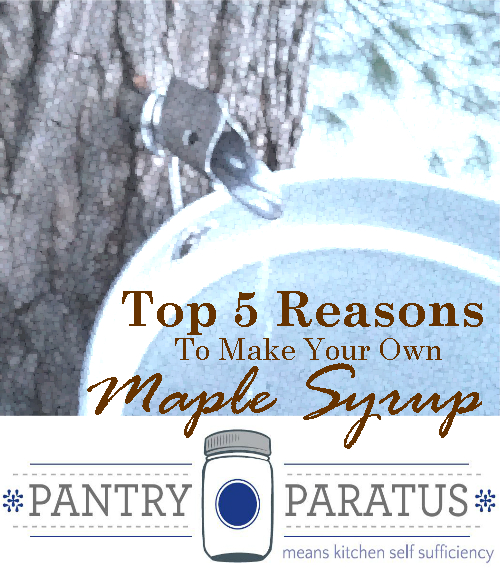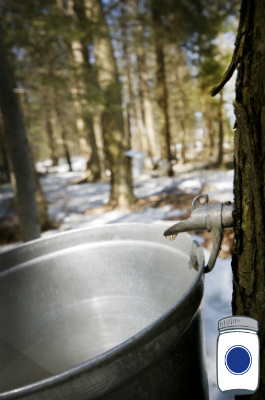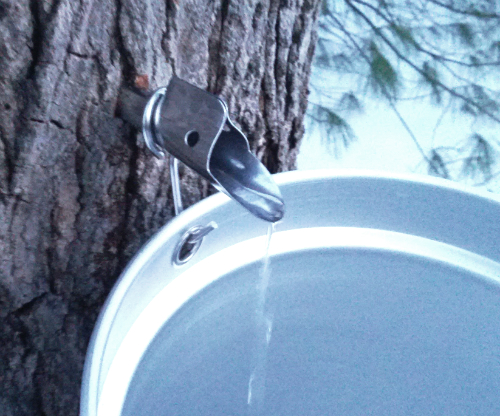Top 5 Reasons to Make Your Own Maple Syrup
Joe McHale, the founder of “Tap My Trees” and creator of these great Maple Sugaring Kits, joins us today to spread his passion for this traditional and time-tested skill. He has taught many people to combine the love for The Outdoors with the production of this independent sugar source.
It isn’t too late this year! Since we’ve had record temperatures across the country, maple sugaring is getting off to a later-than-normal start, so you still have time to get your supplies.

1. It’s FUN – After a long winter trapped indoors, it’s fun to get outside and tap your maple trees. Maple sugaring, the process of tapping maple trees, collecting maple sap, and boiling that sap into maple syrup is just plain fun, every step of the way. Children and adults alike will enjoy drilling a hole into the tree to set the tap, checking buckets daily to see how much sap they collected, boiling outdoors on a late winter day, and best of all, tasting the most amazing flavor of your maple syrup over pancakes.

2. It’s EDUCATIONAL – Maple sugaring includes many educational aspects, including science, math, history, and nutrition. The sap flows in late winter when daytime temperatures rise above freezing and nighttime temperatures fall below freezing, creating a pressure difference within the tree. Did you know it takes approximately 10 gallons of sap to make 1 quart of syrup? That’s a 40 to 1 ratio. Sugar, Black, Red, and Silver Maples can be tapped. Sap from Sugar Maples will have a higher sugar content (2 – 2.5%), requiring less boiling than sap from other maple trees. Complete lessons can be developed based on the different aspects of maple sugaring. Here’s a lesson plan to get you started (on the TapMyTrees website).
3. Maple Syrup is NUTRITIOUS– Maple syrup is one of the healthiest sweeteners. It contains naturally occurring minerals such as potassium and magnesium, and has as more beneficial antioxidants per serving than cabbage or tomato. ¼ Cup of maple syrup has 216 calories
compared to 261 calories for ¼ cup of honey. Many recipes can substitute maple syrup in place of white or brown sugar (approx. 2/3 cup of maple syrup per 1 cup sugar, and also slightly lowering other liquids that might be added when baking). See this chart for more nutritional information.
4. Create GREAT MEMORIES– The combination of this engaging activity and the resulting taste sensory experience creates memories that last a lifetime. Your children will be telling stories to their children and grand-children about when they tapped their trees and made maple syrup. Maple sugaring is truly a unique experience.
5. It is SIMPLE TO GET STARTED– Maple sugaring is a simple process. In late winter, when daytime temperatures start to rise above freezing, drill a hole into your maple trees and insert a spile. Collect the sap and boil it into maple syrup. OK, there are a few more details than this, but nothing that is complicated. Use one of our Starter Kits, with all the supplies needed to tap 3 trees and the Maple Sugaring at Home book, which walks you through every step of the process.

Maple sugaring is fun, educational, results in nutritious maple syrup, creates great memories, and really is simple to get started.
If you have any questions along the way, feel free to contact Joe McHale from Tap My Trees at [email protected].
Looking for other great Maple Syrup articles from Pantry Paratus?
Maple Syrup: The Untapped Potential
Tis the Season for Maple Sugaring
Proviso:
Nothing in this blog constitutes medical or legal advice. You should consult your own physician before making any dietary changes. Statements in this blog may or may not be congruent with current USDA or FDA guidance.

